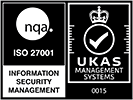
What is the Difference Between PR and Marketing?
What is the Difference Between PR and Marketing?
A person hoping to build a successful strategy for his company must know the answer to “What is the difference between PR and marketing?” in the realm of corporate communication. Both marketing and Pr are integral parts of a business’s communication strategy and work toward similar ends, such as increasing consumer involvement and brand awareness. They are very different in their methods, strategies, and end goals.
What is PR in Marketing
Public relations or PR is the strategic communication method that develops win-win connections between corporations and their followers. Using a variety of communication platforms, such as media relations, social media, and crisis communications, PR’s main focus is to manage an organization’s reputation, build relations with stakeholders, and build positive narratives.
To affect public opinion, public relations (PR) includes creating messages that connect with followers, managing press releases, and responding to public inquiries.
Conversely, marketing is all about promoting and selling goods and services. It includes several initiatives aimed at attracting and involving clients through targeted advertising and strategic product offerings. Product development, pricing, promotions, distribution techniques, and market research are all part of marketing. Using a clearly defined brand message, marketing’s main goal is to boost sales and revenue.
Important Distinctions of PR vs Marketing

1. Goals
The main distinction between PR vs marketing is found in their respective goals.
The main goals of PR are to manage a brand’s reputation, cultivate goodwill, and promote a good image over time. By fostering connections with a range of stakeholders like media, clients, staff, and the community, it helps to create a positive impact on the company. PR’s impact on audience engagement and brand perception is frequently quantifiable and long-lasting.
The goal of marketing is to increase revenue and sales right away. Its nature is more tactical and transactional. Marketers create campaigns targeting particular demographics to get customers to purchase their goods or services directly. Generally speaking, marketing initiatives are highly measurable and are assessed using sales numbers, ROI, and conversion rates.
PR aims to reach a wider range of people, including stakeholders like staff members, governmental organizations, investors, and the media, in addition to prospective followers. This wide scope highlights how necessary it is to uphold a favorable reputation across a range of industries.
Marketing is more targeted, always focusing on prospective clients who are most likely to grasp the offered goods or services. The goal of marketing communication is to attract particular buyer personas and motivate them to act, such as buying something or requesting more information.
2. Channels of Communication
Communication channels are another solved mystery of what is the difference between PR and marketing.
PR uses platforms such as public remarks, blogs, podcasts, interviews, live videos, media events, and press releases. It is more centered on owned or earned media, which means it depends on establishing its channels, like a company blog or social media, and obtaining third-party endorsements through media coverage.
On the other side, marketing makes fruitful investments in paid media, such as ads on print, television, digital, and social media platforms. Although owned media, such as websites and email newsletters, are also utilized in marketing communication, the strategy is typically focused on direct product and service promotion.
3. Metrics and Measurement
Since PR and marketing have diverse objectives and results, there are various ways to measure their success. Metrics and measurement are the eminent parts of explaining what is the difference between PR and marketing.
Metrics including brand mention volume, sentiment analysis, media impressions, share of voice, and audience engagement levels are frequently used to gauge the effectiveness of PR campaigns. Understanding long-term connections with stakeholders requires qualitative insights into public opinion and brand health, which PR offers.
Quantitative indicators including conversion rates, return on ad spend (ROAS), sales growth, customer acquisition cost (CAC), and leads generated are used to gauge the success of marketing campaigns. To enhance the effectiveness of their campaigns, marketers use analytics tools to monitor campaign results in real-time.
4. Duration
PR or marketing can also be distinguished by their long-term vs short-term perspectives.
PR strategies are typically long-term in nature. This involves creating a brand’s identity, promoting connections, and gradually reiterating positive opinions. Delivering consistent messaging and supporting a reliable reputation that endures are the main priorities for public relations specialists.
Marketing tactics are typically more sales-oriented and instantaneous. Certain campaigns, like product launches or seasonal promotions, may have a time restriction. Marketers frequently concentrate on generating a sense of need and promoting a speedy transition from possible interest to a closed deal.
The Value of Teamwork
After clarifying the statement of what is the difference between PR and marketing? The next point is about teamwork in PR or marketing. Although they work in different fields, marketing, and public relations are connected. They can work well together as a complement. A good reputation and favorable media coverage can uplift trust, which makes it simpler for marketing messaging to connect with clients. As a result, a successful PR strategy can elevate a marketing effort. On the other hand, by recognizing consumer patterns and public opinion, marketing analytics can work alongside PR teams in customizing their outreach and message strategy to meet the needs of the market.
Does PR or Marketing Fall together?
Public relations (PR) is a separate but essential component of marketing, yes. Although marketing and public relations are two distinct fields, they frequently work in tandem to promote a brand, good, or service. A component of the marketing mix is PR.
To put it simply, marketing and PR collaborate to accomplish an organization’s marketing aims and objectives. Although they use several approaches and techniques, they both have the same goal of promoting the company and its products. Effective integration of marketing and public relations results in a thorough and unified strategy for boosting and advancing a brand.
What Are PR or Marketing Goals?
In contrasting ways, each of these integral sectors contributes to overarching company objectives. Even though PR and marketing are mostly confused, and they are indeed merging more than ever before due to the fewer boundaries caused by non-traditional media, there are still some important differences between the two that elaborate the answer of what is the difference between PR and marketing?
What is the difference between PR and marketing goals?
Marketing teams concentrate on drawing in new clients, keeping hold of existing ones, and creating compelling tales, whereas public relations teams are primarily concerned with creating a reputation and expanding the reach of news articles, interviews, and announcements.
Both are crucial to the process of establishing consumer loyalty, brand equity, and a favorable brand image.
PR or marketing work together to increase the efficacy of communication efforts by ensuring a consistent brand message across all platforms. Businesses tend to have more success developing their brand and accomplishing their objectives when they recognize and capitalize on the strengths of both disciplines.
In summary
In conclusion, with different responsibilities and goals, marketing and public relations are both remarkable elements of an effective communication strategy. Marketing seeks to increase sales and revenue, whereas PR focuses on building relationships and controlling reputation. Knowing how they differ enables businesses to use the best approaches that optimize their ability to connect and interact with their target audiences.
Professionals in both disciplines must continue to be flexible as the communication landscape modifies, ensuring they capitalize on the distinct advantages of PR or marketing while identifying the times when these disciplines can complement one another to achieve company success. Whether a business wants to boost sales or establish a strong brand reputation, a well-rounded strategy for marketing and public relations will lead to durable success. After justification what is the difference between PR and marketing? Businesses can enhance their sales and revenue more professionally.






